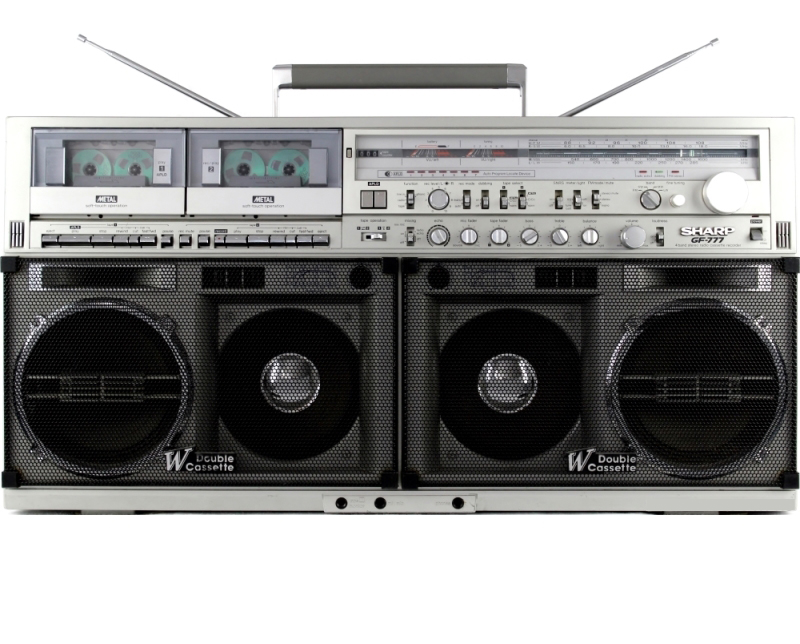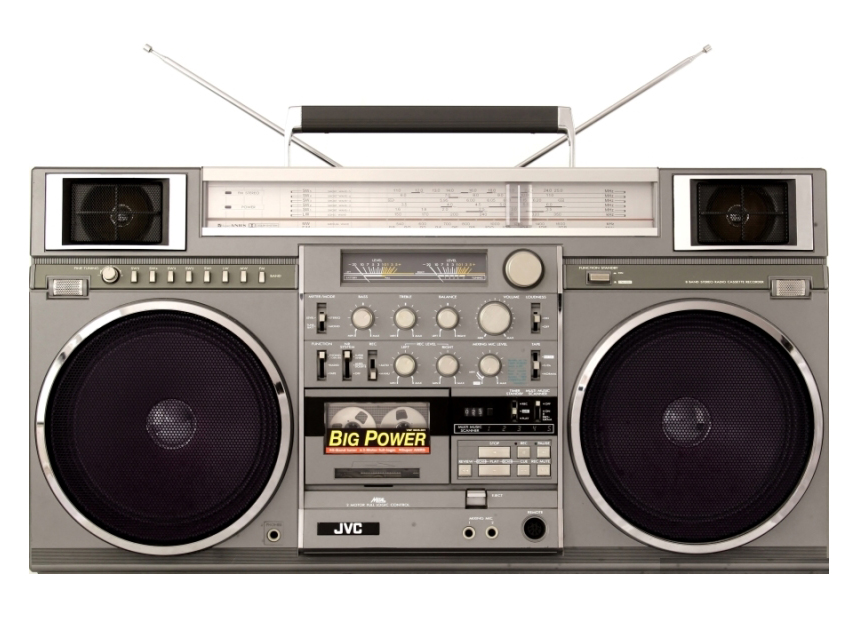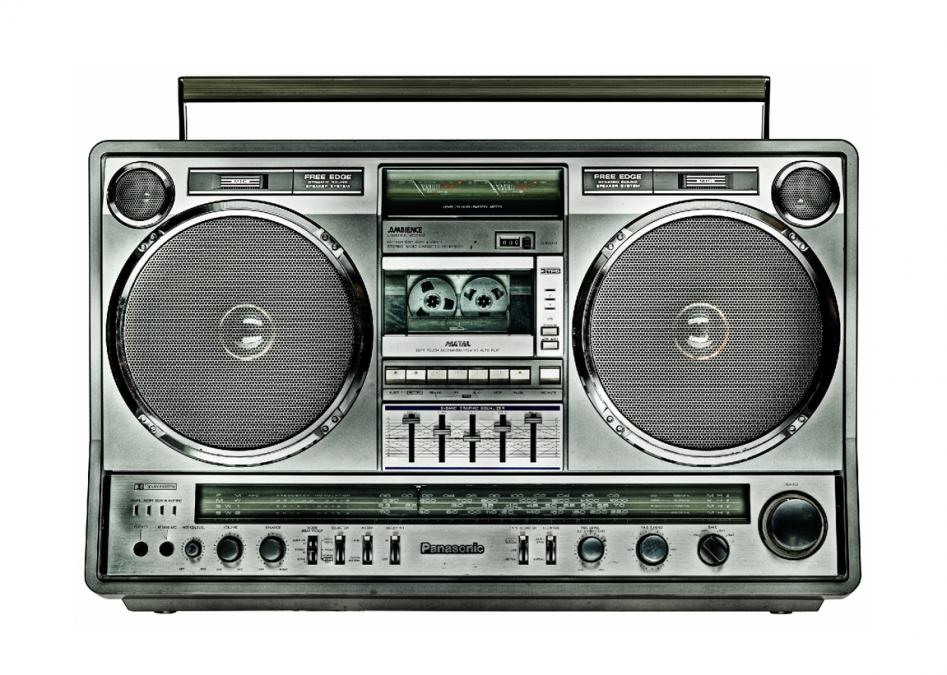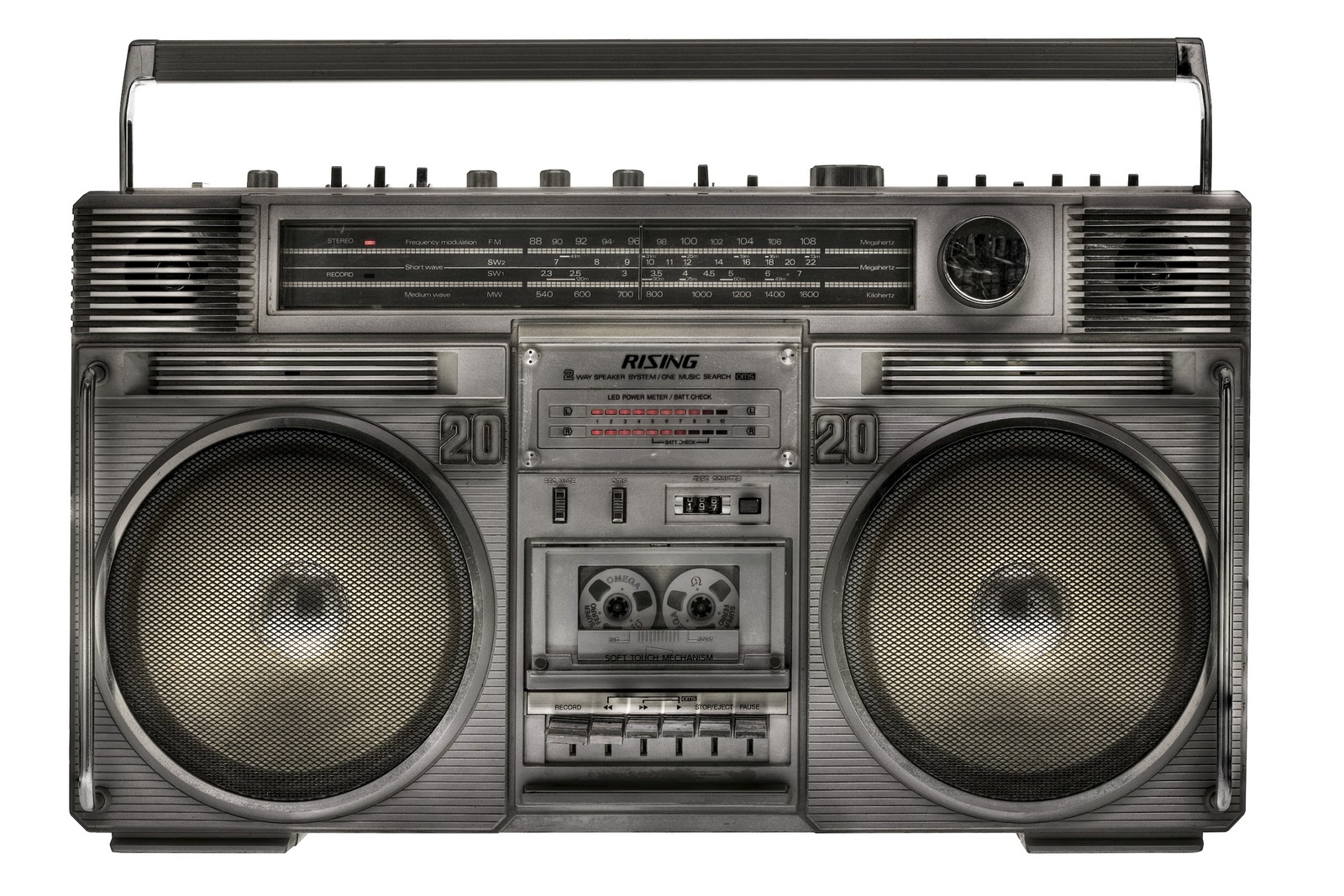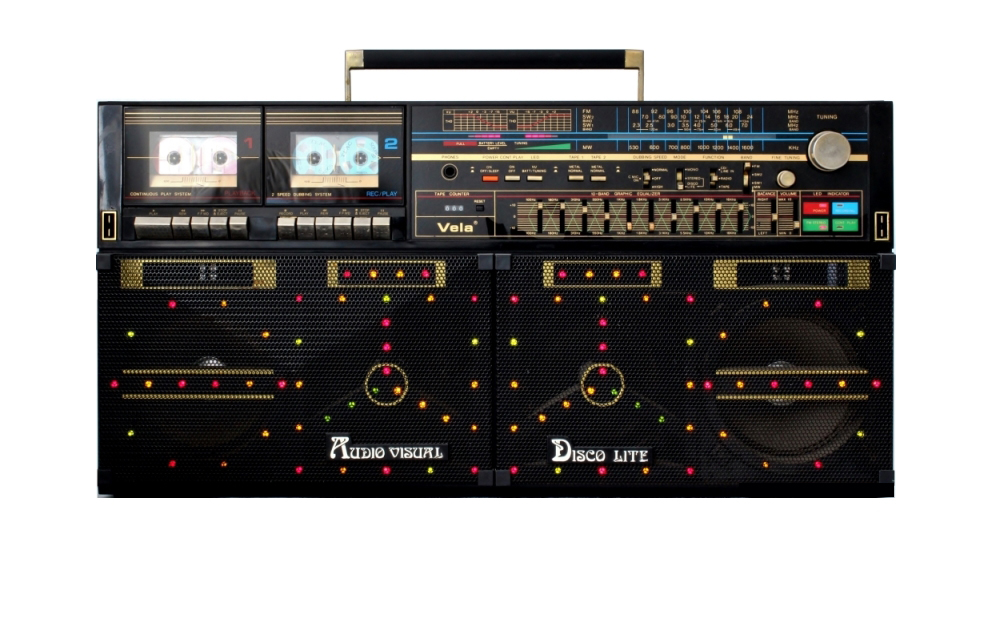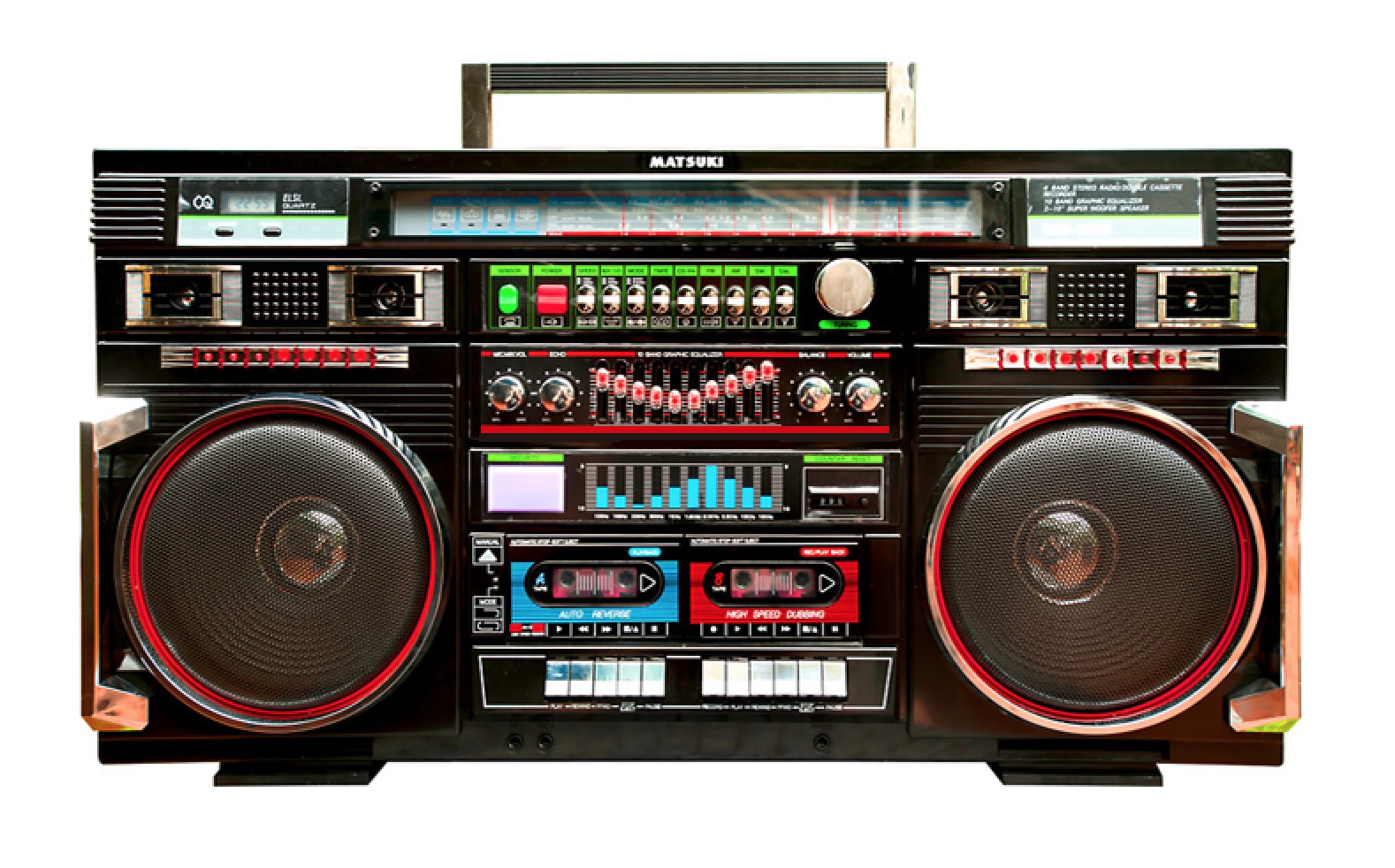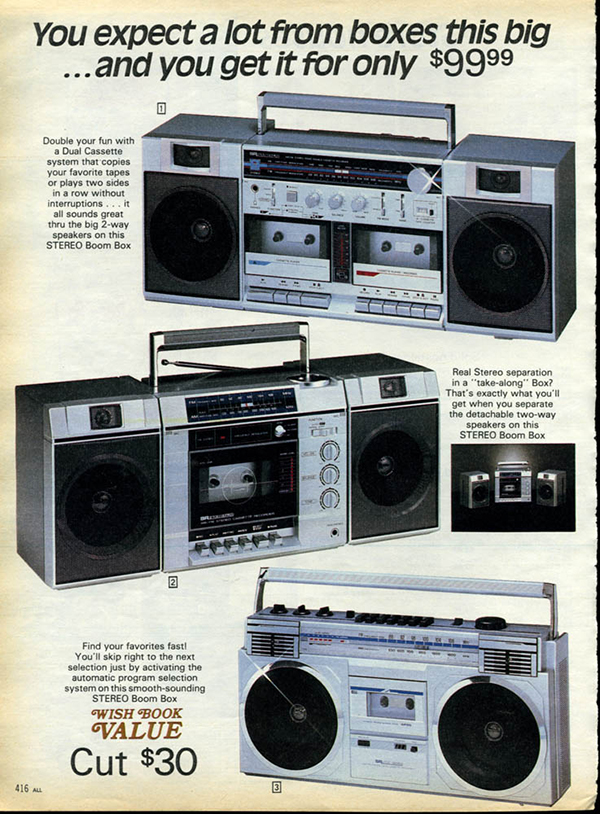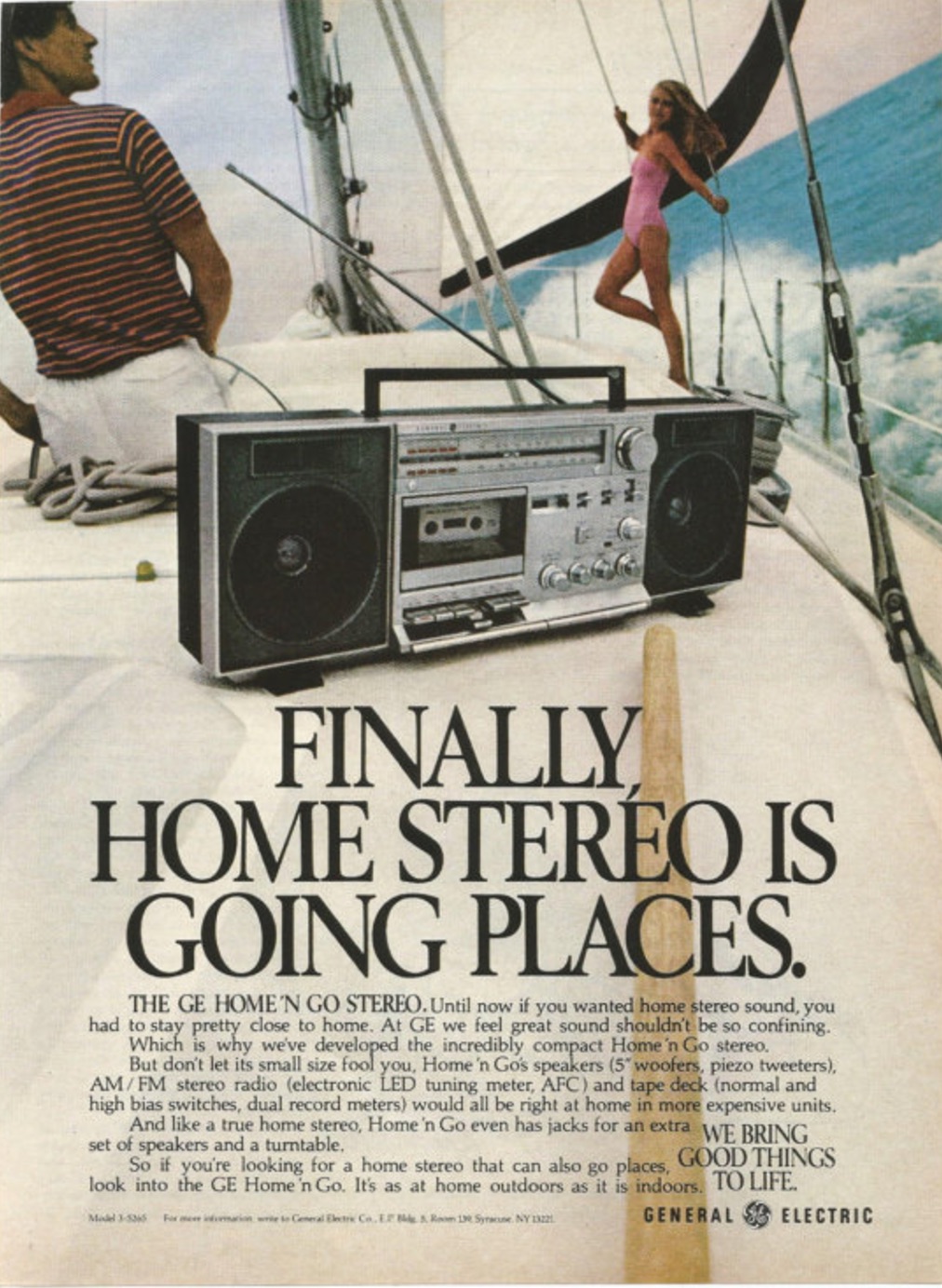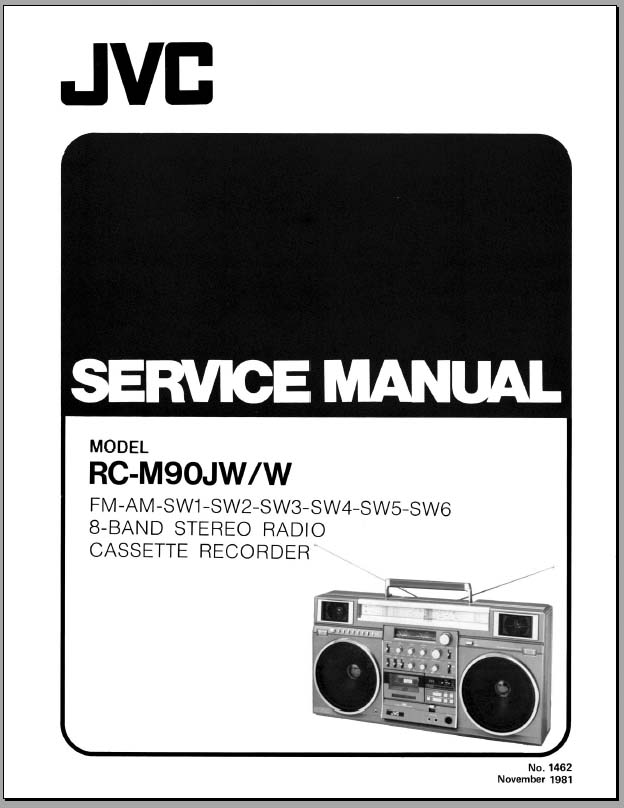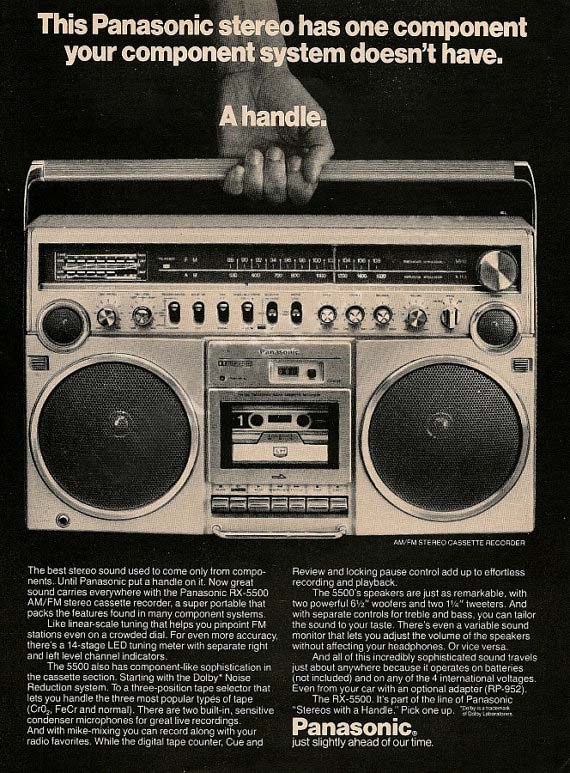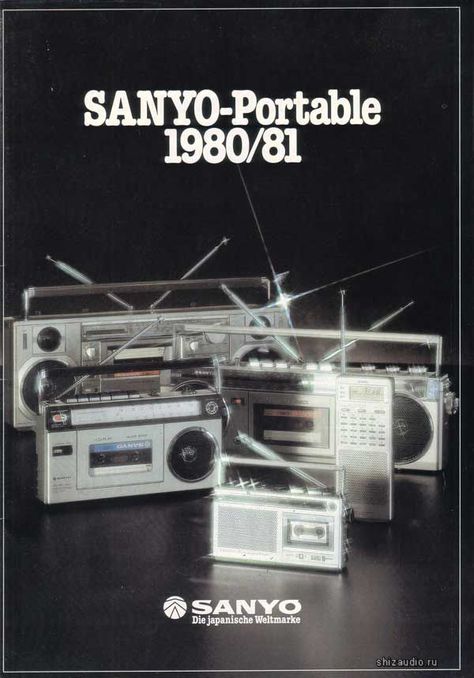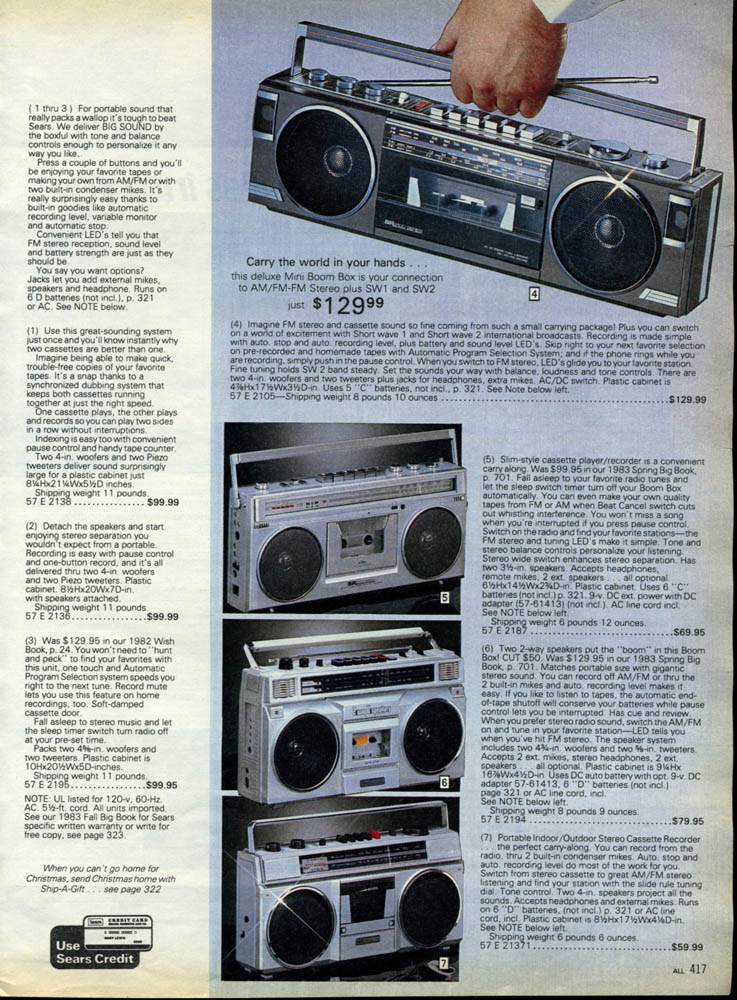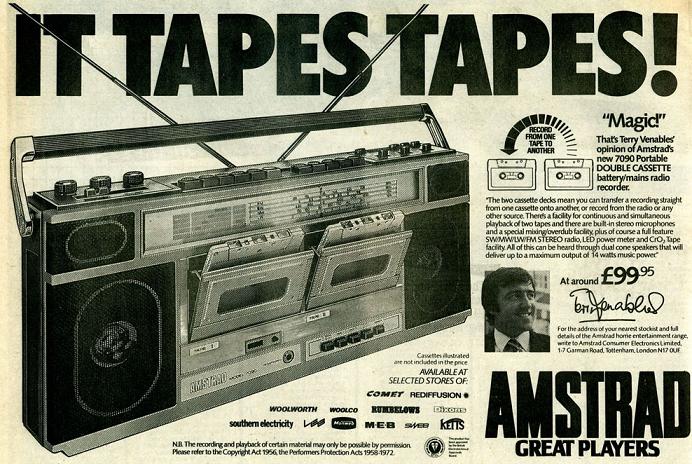The quick answer is the also-ran electronics manufacturers of the late ‘80s, whose design cash-ins included blinky-lights and do-nothing switches.
The emergence of these lesser quality units – made flashier by excessive nomenclature, chrome, and stickers – happened almost overnight. By 1987, they could be found stacked one on top of another in the windows of most electronics storefronts. Displayed next to units produced by companies that developed portable cassette player radios, they were even laughable. At first.
It wasn’t like the earlier models themselves hadn’t been tweaked to increase profits, but that bag of tricks had been held to a higher standard. Sony’s flat-woofer APM speakers, for example, seemed gimmicky, but back then it was risky and innovative to put flat woofers into a briefcase. APMs were a thing until it was determined they sounded best when a unit had its back on a wall (not very portable, but they were allowed a marketing cycle). My favorite was how Toshiba’s detachable speakers locked to the amplifier by safety deposit box grade latches. The best part about early boomboxes is how overbuilt they were.
The newer ones, like the Breakdancer BD-8000 by Skitronic, Ltd., were trying too hard. Nicknamed the “Disco-Lite,” the BD-8000 was the short-lived company’s vulgar follow-up to its “SpaceTech” box and heralded the end of the golden era. The arrival of these poseur eyesores is best described by Lyle Owerko, photographer and author of The Boombox Project. “[Y]ou have the second or third generation that steps into the culture…so far from the origination [that] it’s the impression of what’s real, but it’s not the full definition of what’s real. It’s just cheesy.”
Better-engineered, better baptized boomboxes went by names like the Sanyo Big Ben, The National, the BomBeat, the GF Triple-7, the Superscope, the Clairtone OPS, the Fisher Big Box, and the Emerson 90 – and there wasn’t a “Disco,” “Tech,” or “Ghetto” among them.
Late ‘80s boxes were lighter, thinner, and made with lower-grade plastic composites that felt inferior to the touch. Dials, levers, and equalizer slides were replaced by quick-touch “pads” requiring repeated tapping for functionality, but they lacked the durability such repetition required. The housings themselves were nearly all black, no longer silver or gun metal. Worst of all was that many were designed to be aerodynamic, with shaved corners and curved sides. Less block, more talk.
From 1979 to 1989, there was a blitzkrieg of demonizing both hip hop and punk rock, with politicians, Christian groups, and cops targeting both as favored society-killers. The climate dictated that our music machines have the most getaway portability possible, and there was pride in escaping clampdowns with these monsters in tow. Forget the Marines; we never left a box behind. But no one actually cared that the new ones were lighter and less expensive. We valued durability much more than disposability (not to mention aerodynamics).
To feel the loss, you didn’t need to be able to rattle off model numbers, histories, or the capabilities of the best units. You didn’t need to grow up in Boyle Heights or Bed-Stuy. You didn’t even need to own one! You just needed to be open-minded to cultures other than your own, as they were reaching out for you on every street corner in every neighborhood in America.
When Sharp, Realistic, JVC, General Electric, Phillips, Toshiba, Marantz and the other big portable makers began to duplicate the trashier models, some of us recognized how rare the originals would become and kept ‘em. Somehow, we knew we were lucky to be part of something far bigger that what we could carry.
Vintage boomboxes are treasured largely for that reason, and the ones that can still play will tell you so when you turn ‘em on. Come check out the ones we’re saving at Cosmic Vinyl.
Welcome to the Cosmic Vinyl blog.
We share music and hope for the best.
About
In 1981 a Nelson family friend, and Manager of Wolf & Rissmiller's Country Club offered a “comped,” “safe” balcony seat for any show John cared to see at the venue. His parents reluctantly agreed. The Los Angeles band, X, was young Nelson’s first pick, and soon after, The Blasters, Oingo Boingo, 45 Grave and Agent Orange.
It all went downhill from there, but that's for another website.
Check out his Fake News @defcon_john
.
.
